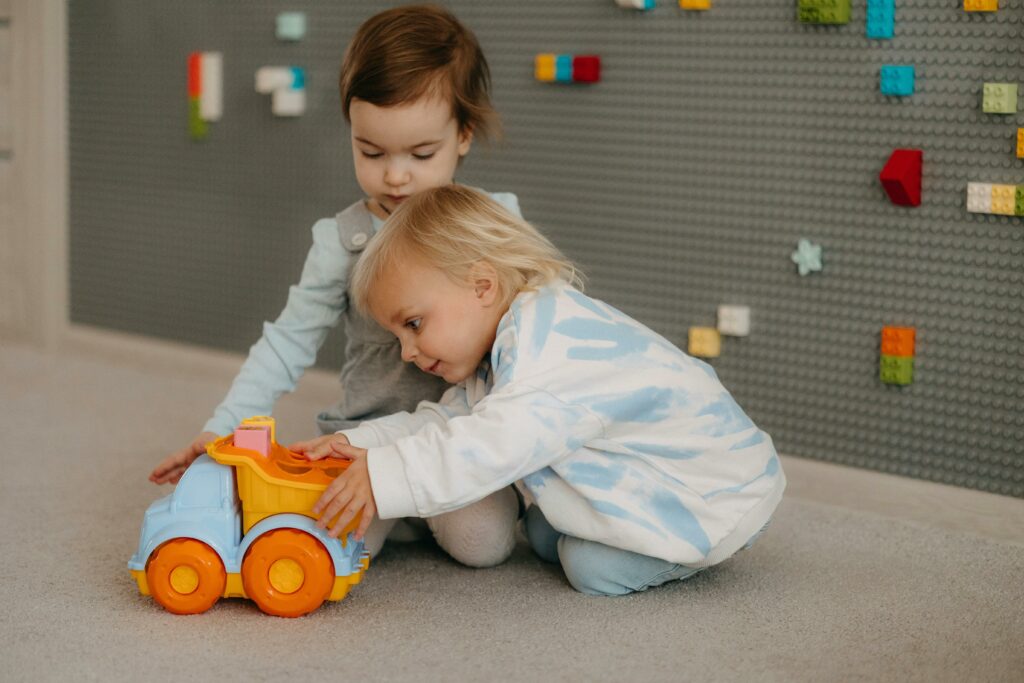
How does play support development in ABA therapy for young children?
Play-based ABA helps children learn communication, social, and daily living skills naturally. It turns therapy into joyful, engaging interactions that promote faster learning and generalization.
For many young children, play is the natural way to learn. It’s how they explore, express themselves, and connect with others. In Applied Behavior Analysis (ABA) therapy, play isn’t just about fun—it’s a vital teaching tool that helps children develop critical life skills in a joyful and engaging way.
Whether your family receives ABA therapy at home or in a center in Atlanta, Georgia, integrating play into sessions can make learning feel less like work and more like discovery.
In ABA, therapists use structured and unstructured play activities to teach a range of developmental skills. By following a child’s interests and motivations, therapists can turn play into purposeful learning moments.
Language and communication (e.g., requesting, labeling, turn-taking)
Social interaction (e.g., joint attention, sharing, parallel play)
Fine and gross motor coordination
Problem-solving and cognitive skills
Self-regulation and emotional expression
Therapists carefully embed these learning goals into games and toys that naturally attract the child’s attention.
Play-based ABA is especially effective with young learners because it builds on how children already engage with the world. Rather than relying solely on structured instruction, therapists can use natural environment teaching (NET) to introduce concepts through real-life, playful scenarios.
Increases motivation by using preferred activities
Builds trust and rapport between the child and therapist
Improves generalization by teaching skills in everyday contexts
Reduces resistance and behavioral challenges during sessions
Supports emotional development in a safe and joyful environment
In short, play turns learning into something your child looks forward to—rather than something they want to avoid.
Therapists use a variety of evidence-based techniques to ensure that play remains both fun and educational:
Therapists observe what the child is interested in—whether it’s trains, building blocks, or pretend cooking—and use those interests to embed teaching opportunities.
Therapists may model desired behaviors during play and encourage the child to imitate. For example, stacking blocks can turn into a chance to model “up,” “more,” or “my turn.”
Rather than giving rewards outside the activity, the fun of the play itself becomes the reinforcement. If a child enjoys building, each added block becomes a small reward for requesting, attending, or cooperating.
Therapists also build routines within play—like how to initiate, maintain, and end a game—giving children a framework to apply these social behaviors elsewhere.
The implementation of play may differ slightly depending on the setting, but the goals remain the same. In center-based ABA therapy, such as those now offered in Atlanta, Georgia, there’s often access to specialized toys, peer interaction, and dedicated play areas.
In home-based ABA, therapists use the child’s familiar environment and toys to make learning comfortable and relevant. Both approaches rely on play to connect skills with real-life scenarios.
You don’t need to be a therapist to use play to support your child’s development. Here are some simple, powerful ways parents can reinforce play-based learning:
Engage with your child’s preferred activities, even if it’s repetitive or silly. Every interaction is a chance to model communication and social behaviors.
Narrate what you and your child are doing during play to encourage language development. Example: “You’re rolling the car fast!” or “Let’s stack the blocks together.”
Place a favorite toy just out of reach so your child has a reason to ask for help or use a gesture. These small moments reinforce communication.
Simple games like rolling a ball or building with blocks together teach turn-taking, patience, and joint attention.
Some parents worry that play might “distract” from learning goals. In truth, when done correctly, play-based ABA is highly structured and intentional—but it doesn’t feel rigid to the child.
Play doesn’t replace traditional instruction; it enhances it. For many children, skills learned through play are more easily generalized and longer-lasting than those learned through drill-only formats.
When play is woven into ABA therapy, learning becomes joyful, natural, and lasting. For young children especially, play is not only the work of childhood—it’s the gateway to communication, relationships, and independence.
If you’re a parent exploring ABA therapy in Atlanta, Georgia, look for providers who incorporate meaningful, play-based strategies that align with your child’s needs and interests.
Through play, your child can grow not just in skill—but in confidence, creativity, and connection.